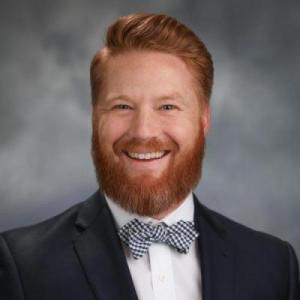
Affiliate of the Duke Regeneration Center
Faculty Network Member of the Duke Institute for Brain Sciences
timothy.faw@duke.edu
Office: 919.613.8699
Home
Dr. Faw’s translational research is informed by years of neurologic clinical practice and conducting foundational studies using clinically relevant animal models of central nervous system (CNS) injury. This research seeks to understand better the cellular and molecular responses underlying CNS damage and repair and the ability of rehabilitation and novel therapeutics to influence these processes from rodents to humans. Cellular, molecular, genetic, and behavioral approaches performed in small animal models allow the development and testing of therapeutics for clinical translation. Moreover, using clinically relevant rehabilitation paradigms and behavioral outcomes in rodents, such as treadmill locomotion, kinematics, and magnetic resonance imaging, allows for rapid translation or even parallel study in clinical populations. The overall goal of Dr. Faw’s research program is to improve the ability of individuals with neurologic dysfunction to participate in meaningful activities.
(Displayed image: Zebrafish spinal cord courtesy of Valentina Cigliola, PhD.)
Research
Fellowships, Gifts, and Supported Research
Myelin Plasticity During Motor Learning After Spinal Cord Injury · August 2016 - February 2019
Principal Investigator · National Institutes of Health · $80,038.00
A Novel Apolipoprotein E (apoE)-mimetic Pentapeptide to Improve Recovery in Acute Spinal Cord Injury · January 2021 - December 2021
Duke Institute for Brain Sciences · $75,000.00.
Novel therapies that improve mobility after spinal cord injury (SCI) could lead to a better quality of life and save billions of dollars in lifetime costs. Targeting the early inflammatory response to SCI is appealing, as it is the leading cause of tissue damage after the initial injury. Apolipoprotein E (apoE) is critical in mediating this neuroinflammation after nervous system damage. However, systemic delivery of the intact protein is ineffective as a therapeutic because it fails to cross the blood-brain barrier. As such, we have developed small, apoE-based peptides that mimic the function of the intact protein, cross the blood-brain barrier, and have few side effects. Here, we will test the hypothesis that early treatment with an apoE-mimetic peptide, CN-105, reduces inflammation and tissue damage and improves recovery in a clinically relevant animal model of SCI. This peptide, developed at Duke, has received Investigational New Drug and Orphan Drug designations from the Food and Drug Administration, which will facilitate translation to early clinical trials.
People
Current Members
Alumni
Past Lab Members
We have been incredibly fortunate to have the following individuals as members of our lab:
Doctor of Physical Therapy Students
- Matthew Neehouse, PT, DPT (2023); Research Practicum Student, The Ohio State University
Current Position: PhD Student, Neuroscience, Northwestern University
- Nicholle Lewis, PT, DPT (2021 – 2023); Graduate Research Associate
Current Position: Resident, Women’s Health Physical Therapy Residency, Atrium Health
- Lindsay Heffron, PT, DPT (2021 – 2022)
Current Position: Research Lab Assistant (Locomotor Recovery Lab), Indiana University
- Gabriel Witt, PT, DPT (2020 – 2022)
Current Position: Physical Therapist, Howard Head Sports Medicine
Publications
Selected Publications
|
|
|
|
|
|
|
|
| View the complete list of publications. |
Research Opportunities
Contact Tim Faw, DPT, PhD, for more information about research job opportunities.
News and Events
- https://ortho.duke.edu/blog/two-duke-orthopaedics-researchers-publish-nature-communications
- https://dibs.duke.edu/news/dibs-announces-2020-research-seed-grant-recipients/
- https://foundation4pt.org/an-interview-with-timothy-d-faw-pt-dpt-phd-5-time-fptr-funding-recipient/
- https://www.youtube.com/watch?v=MRVl6Z6b5G0
- https://www.youtube.com/watch?v=CCEAAlhSdWU&t=10s
DEIA
Our Lab’s Commitment to Diversity, Equity, Inclusion & Accessibility
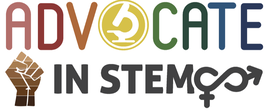
“We believe that intellect is universally distributed. It is scattered irrespective of race, gender, socioeconomic status, or ability level. That means we develop the best systems in this country when we figure out how to mine talent from everywhere.”
(Adapted from a quote by Dr. Kafui Dzirasa, A. Eugene and Marie Washington Presidential Distinguished Professor, Duke University)
The transformative potential of science and research stems from our human ability to work together. Collaboration and respect lay the foundation for innovation and progress within our lab, affiliate health systems, and in the community at large. Advancing diversity, equity, inclusion, and accessibility is critical in our efforts to foster this exchange, as our team members' unique backgrounds and lived experiences help augment the magnitude of our impact. In this lab, we share a common passion for science, belief in these values, and responsibility to contribute towards building a more equitable future.
OUR BELIEFS
Our team believes in the power of education, awareness, and reflection to understand the systemic issues that face URM in our community. This framework provides tools to question the status quo and affect change. We recognize the recent efforts in our local community and beyond to promote diversity, equity, and inclusion, but we believe there is still work to do. Our team agrees that diversity fuels greatness, and our mission is to continue providing opportunities for each of us to excel.
OUR PLEDGE
We pledge to develop and maintain a diverse, equitable, and inclusive lab environment that supports people of all backgrounds and walks of life. To achieve this goal, we hold ourselves accountable for the following actionable measures:
Onboarding
We pledge to recruit from a more diverse population for all positions in the lab to ensure underrepresented voices are heard and to promote robust exchanges of ideas.
We pledge to provide a safe space for all onboarded lab members where they can feel confident that they will not be subject to discrimination, harassment, or other harm.
Advocacy
We pledge to provide equal opportunities for all lab members to participate in projects, publications, and presentations.
We pledge to credit all members involved in each project publicly.
We pledge to promote and credit the science of other researchers from underrepresented backgrounds.
Education
We pledge to educate ourselves and to acknowledge the impact of issues that face our URM colleagues. This includes the national, statewide, and university levels.
We pledge to continue our education on the barriers inherent to academia, particularly implicit bias, racism, and sexism
RESOURCES
Duke University General Resources
- Anti-Racism website - Duke’s central hub for information about anti-racism work.
- Duke Office for Institutional Equity- provides institutional leadership in enhancing respectful, diverse, and inclusive environments.
- Duke HR Diversity & Institutional Equity Policies - offers comprehensive details about Duke’s HR policies regarding diversity and institutional equity.
- Multicultural Resources Center - prepares learners, staff, and faculty to live in a world of diverse people and backgrounds.
- Duke’s Samuel Dubois Cook Society - mission is to recognize, celebrate, and affirm the presence of African-American students, faculty, and staff at Duke.
- Duke Health Disparities Consortium (DHDC) is an interdisciplinary consortium of Duke faculty, staff, and learners interested in health disparities work.
- Diversity Toolkit - a one-stop resource for diversity education.
Duke University School of Medicine Resources
- Doctor of Physical Therapy Program: DiversiTea Newsletter (DPT) - a sustainable, interactive collection of work that embodies diversity, equity, and inclusion.
- Department of Orthopaedic Surgery: Orthopaedic Inclusion Workforce (OIW) - mission is to ensure that the best and the brightest individuals are represented within orthopedics and given equitable opportunity to make invaluable contributions to the advancements in musculoskeletal healthcare.
- Moments to Movement (M2M) - committed to dismantling racism and better understanding the root causes, harms, and strategies to reduce racial inequity.
Duke Student Groups and Organizations
- Duke-SACNAS (Society for Advancement of Hispanics/Chicanos and Native Americans in Science)
- Duke University Black Student Alliance
- Duke Student Affairs - Center for Sexual and Gender Diversity
- Duke University Center for Muslim Life
- Bridging Opportunities & Networking in Diversity (BOND) Council
- Duke International House

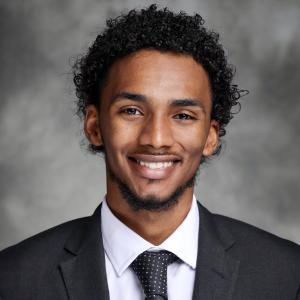
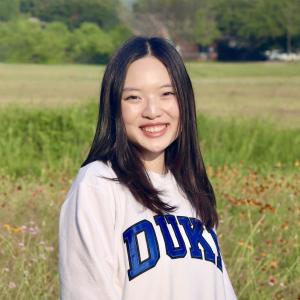

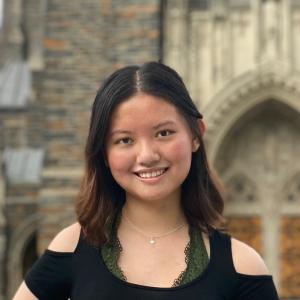
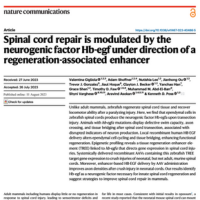 Cigliola V, Shoffner A, Lee N, Ou J, Gonzalez TJ, Hoque J, Becker CJ, Han Yanchao, Shen G, Faw TD, Abd-El-Barr MM, Varghese S, Asokan A, Poss KD (2023). Spinal cord repair is modulated by the neurogenic factor Hb-egf under direction of a regeneration-associated enhancer. Nature Communications 14:4857.
Cigliola V, Shoffner A, Lee N, Ou J, Gonzalez TJ, Hoque J, Becker CJ, Han Yanchao, Shen G, Faw TD, Abd-El-Barr MM, Varghese S, Asokan A, Poss KD (2023). Spinal cord repair is modulated by the neurogenic factor Hb-egf under direction of a regeneration-associated enhancer. Nature Communications 14:4857. 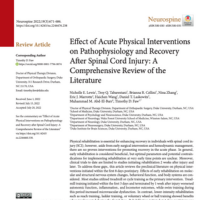 Lewis NE, Tabarestani TQ, Cellini BR, Zhang N, Marrotte EJ, Wang H, Laskowitz DT, Abd-El-Barr MM, Faw TD* (2022). Effect of Acute Physical Interventions on Pathophysiology and Recovery after Spinal Cord Injury: A Comprehensive Review of the Literature. Neurospine 19(3):671-686.
Lewis NE, Tabarestani TQ, Cellini BR, Zhang N, Marrotte EJ, Wang H, Laskowitz DT, Abd-El-Barr MM, Faw TD* (2022). Effect of Acute Physical Interventions on Pathophysiology and Recovery after Spinal Cord Injury: A Comprehensive Review of the Literature. Neurospine 19(3):671-686. 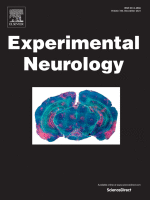 Faw TD, Lakhani B, Schmalbrock P, Knopp MV, Lohse KR, Kramer JLK, Liu H, Nguyen HT, Phillips EG, Bratasz A, Fisher LC, Deibert RJ, Boyd LA, McTigue DM, Basso DM (2021). Eccentric rehabilitation induces white matter plasticity and sensorimotor recovery in chronic spinal cord injury. Experimental Neurology 346, 113853.
Faw TD, Lakhani B, Schmalbrock P, Knopp MV, Lohse KR, Kramer JLK, Liu H, Nguyen HT, Phillips EG, Bratasz A, Fisher LC, Deibert RJ, Boyd LA, McTigue DM, Basso DM (2021). Eccentric rehabilitation induces white matter plasticity and sensorimotor recovery in chronic spinal cord injury. Experimental Neurology 346, 113853. 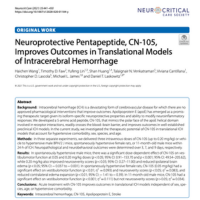 Wang H, Faw TD, Lin Y, Huang S, Venkatraman TN, Cantillana V, Lascola CD, James ML, Laskowitz DT (2021). Neuroprotective pentapeptide, CN-105, improves outcomes in translational models of intracerebral hemorrhage. Neurocritical Care 35:441-450.
Wang H, Faw TD, Lin Y, Huang S, Venkatraman TN, Cantillana V, Lascola CD, James ML, Laskowitz DT (2021). Neuroprotective pentapeptide, CN-105, improves outcomes in translational models of intracerebral hemorrhage. Neurocritical Care 35:441-450.